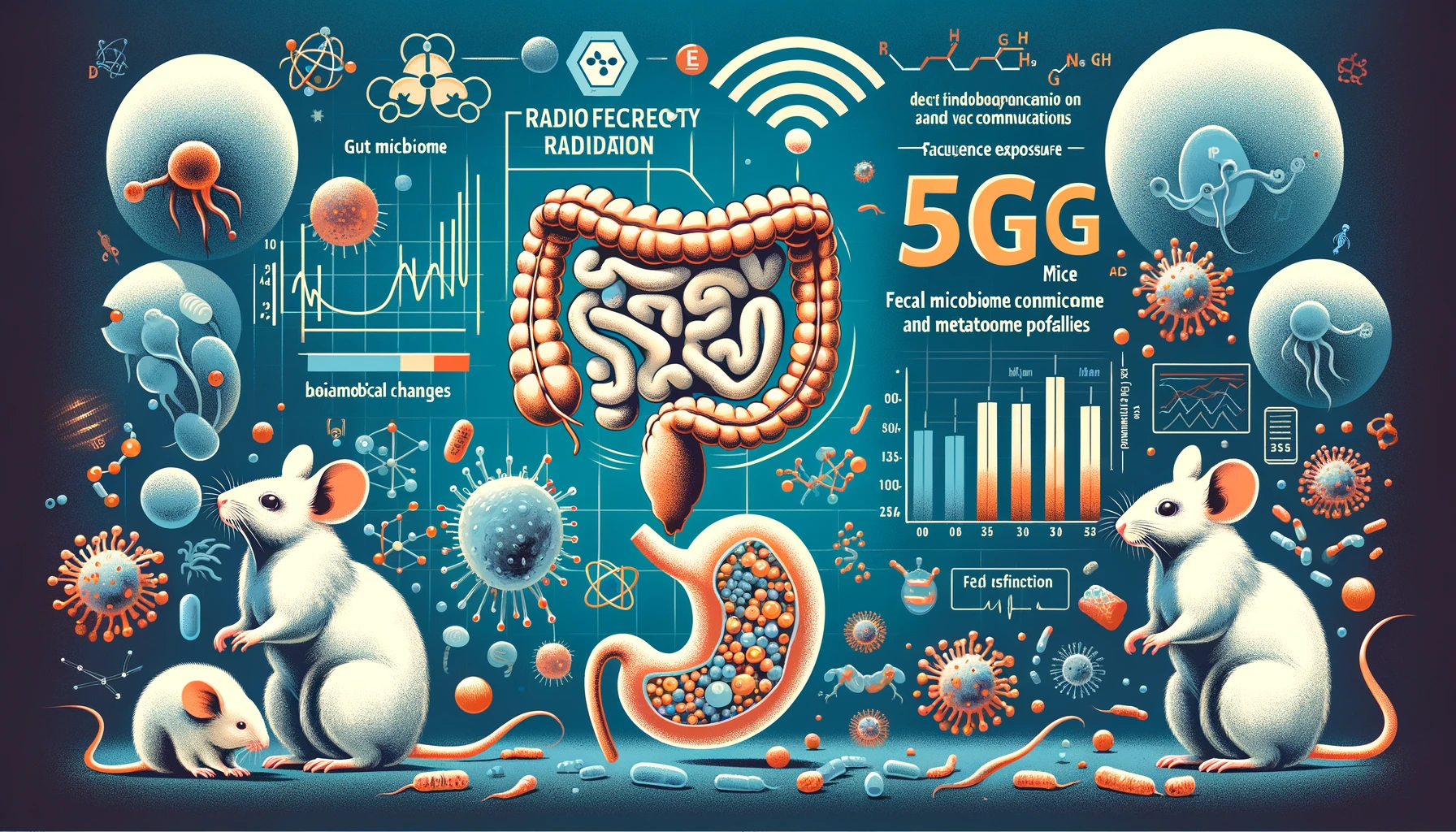The study “Effects of radiofrequency field from 5G communication on fecal microbiome and metabolome profiles in mice” aimed to investigate the biological effects of long-term exposure to 4.9 GHz radiofrequency (RF) fields, one of the frequencies used in 5G communication. Adult male C57BL/6 mice were divided into two groups: a sham group and an RF group, with the latter exposed to 4.9 GHz RF fields for an hour a day over three weeks. The study found significant changes in the gut microbiota composition and a reduction in microbial diversity in the RF group. Additionally, metabolomic analysis revealed alterations in metabolites related to several biological pathways. The findings suggested potential biological impacts of RF exposure on gut microbiota and metabolome profiles, with implications for understanding the interaction between electromagnetic radiation and biological systems.
The exposure led to reduced microbial diversity and changes in microbial community distribution, with specific bacteria phyla overrepresented or enriched in different groups. These microbiota changes were significantly correlated with alterations in fecal metabolites, indicating potential health implications due to the disruption of gut microbiota and metabolic profiles. The results suggest a complex interplay between radiofrequency exposure and biological processes affecting gut health.
Unveiling the Impact of 5G on Microbial Harmony: A Deep Dive into Mice Microbiome and Metabolome Shifts
In the era of rapid technological advancement, the rollout of 5G communication networks has sparked a mix of anticipation and health concerns. A recent study peering into the effects of radiofrequency fields from 5G on the fecal microbiome and metabolome profiles in mice provides us with valuable insights. Let’s explore the intricate dance of microbes under the influence of this modern marvel.
The Study’s Approach
Researchers embarked on a journey to understand how 5G exposure could alter the microbial and metabolite compositions within mice. Through meticulous experimentation involving 10-minute intervals of 5G exposure followed by 10-minute rest periods over 12 hours daily, the study painted a vivid picture of the cellular-level dance influenced by these electromagnetic waves.
Key Findings: A Microbial and Metabolic Tango
The results were intriguing, revealing shifts in the fecal microbiome and metabolome profiles of the exposed mice. While the complexity of these changes might seem daunting, they could hold the key to understanding potential health impacts.
Understanding the Shifts
What do these shifts mean for overall health? The study’s findings suggest that 5G exposure can influence the gut microbiota, which is known to play a pivotal role in immune function, digestion, and even mental health.
Implications for Human Health
While the study was conducted on mice, it raises questions about the possible effects of 5G exposure on human health. The gut microbiome’s importance in various health aspects makes this a critical area of investigation.
FAQs: Demystifying the Science
- What does the study suggest about 5G exposure? The study indicates that 5G exposure can lead to alterations in the fecal microbiome and metabolome in mice, which could have implications for health due to the gut microbiome’s wide-reaching effects.
- Are these findings directly applicable to humans? While the study offers valuable insights, further research is needed to fully understand the implications for human health, considering the differences between mice and human biology.
- What are the potential health implications of these microbiome changes? Changes in the gut microbiome can affect the immune system, metabolism, and even neurological functions, although the exact implications of the study’s findings require more research.
Looking Ahead: The Next Steps in Research
The study opens the door to a new realm of inquiry, prompting a call for further research into the long-term effects of 5G exposure on the microbiome and overall health.
Conclusion: Embracing Technology with Caution
As we step into the 5G era, studies like these are crucial for understanding the technology’s subtle interplay with our biological systems. By staying informed and proactive, we can ensure that our leap into this wireless future is both innovative and safe for our intricate internal ecosystems.








